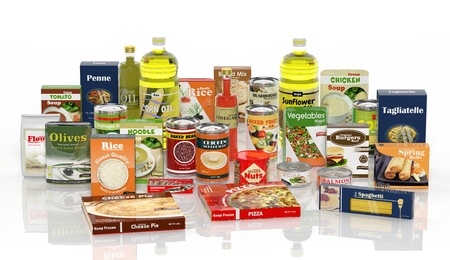
Food product packaging, indeed any kind of packaging does not lend itself well to environmental sustainability. The issue for many users with food packaging sustainability is most often the commercial viability and the extra cost packaging adds to a product. The customer ultimately pays for this benefit but unfortunately we all end up paying in the end if we succeed in trashing the environment. The upside for a business is offering the consumer the opportunity to do something about it. One way is to make it clear that they are buying products where at least some thought has been given to a package that might degrade as in composting, be reusable or recycled to something else.
One way that businesses have attempted to improve the green credentials is to pursue ways of reusing their raw materials especially for packaging. In a global sense, we are now extracting more along with improvements to recycling, reusing, better collection and tightening the regulations to reduce waste. Even now we have not yet learnt to produce an eco-friendly toothpaste tube, or find suitable alternatives to the polystyrene container for all our takeaways. At least chips or fries can come wrapped in newspaper. What however does come wrapped in plastic bags are crisps or the US versions, chips and virtually all snacks.
Environmental sustainability is probably still third on the list – behind driving a consumer through packaging to my product and keeping it as cheap as possible. If we are to have any sense of what is happening to a package, employ some internal life cycle analysis. It’s remarkable what the approach does to rethinking the strategy for sustainable packaging. The tool has helped a number of businesses from nestle to GSK think how to use materials which will reduce environmental impact.
Take the toothpaste tube. Recycling is nigh impossible because most tubes along with any other tubed product leave a small amount of residue behind. No matter how hard I squeeze the toothpaste out, there is enough left over material to be regarded as contamination. It’s just as bad with a plastic toothbrush.
Paper Packaging
Paper, whilst being quite an old form of packaging may be one of the most sustainable. It does at least come from resources which can be grown from trees and plants, that can be regrown and replanted. Sadly, a lot of cardboard is not compostable or even biodegradeable based on the EU’s own standards for paper. It‘s simply because they are coated with certain inks and laminates which do not degrade properly.
In fact anyone aiming to comply with EU standards must completely reassess their requirements and almost educate the consumer to accept a different approach. We know of businesses using new fibres along with the old ones like cellulose, using unbleached versus bleached virgin fibers, increasing the use of recyclable paper especially the fibre in other applications and of course optimising their use.
Glass and Metal
Food packaging made with metal and glass is by their very nature sustainable – no issue really. We know of the same package being recycled over and over again. Whilst they may be heavier than most, if there is one credible feature, it’s their ability to be robust enough for re-use. All provide exceptional oxygen barrier properties and van stop moisture ingress or egress. Unfortunately weight and indeed fragility or brittleness is an issue and that reduces their sustainable distribution, collection and resorting into viable recycling streams.
A variety of methods are now employed to improve usability. Finite element modelling along with new developments in molding technology have seen an improved offering especially with glass. Metals now enjoy better additives along with better refinements in molding methods. This has created more malleable, even light metal containers. It’s unfortunate that extraction of metals can be a blight on the landscape as with iron and bauxite extraction for stainless steel and aluminium. Once it’s out of the ground and smelted, there is at least the possibility of reuse.
Recycling rates for steel and aluminum are exceptionally high compared even to paper. About 95% less energy is needed to produce a can from recycled metals compared to newly mined metals. Further, steel is separable magnetically within recycling centers and that confers and enormous advantage in the primary phases of any separation process.
We will continue to add more details on food packaging sustainability because the context and the movement is rapidly changing as we attempt to mitigate for climate change and reduce damage to the environment. We have looked at flexible packaging recently because it is one of the critical areas that a number of businesses are keen to focus on.
Couldnt agree more with this.